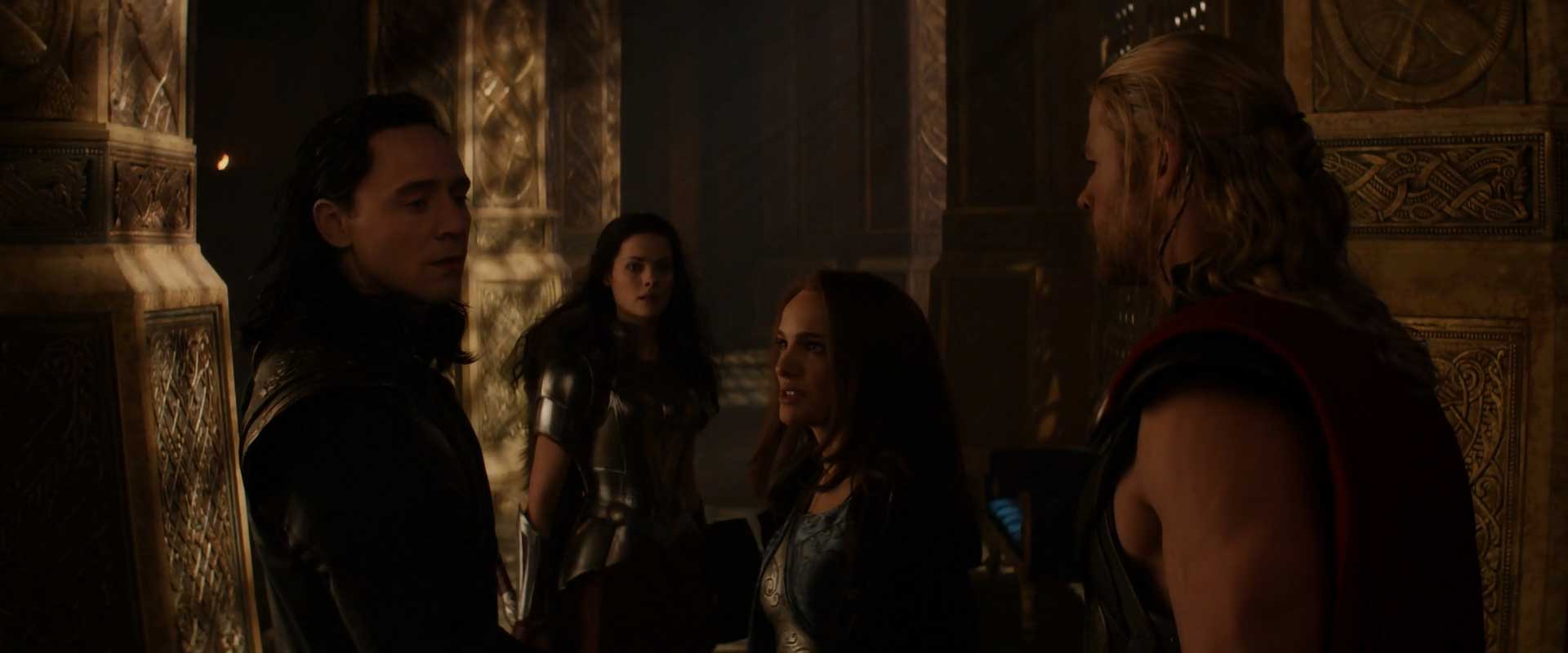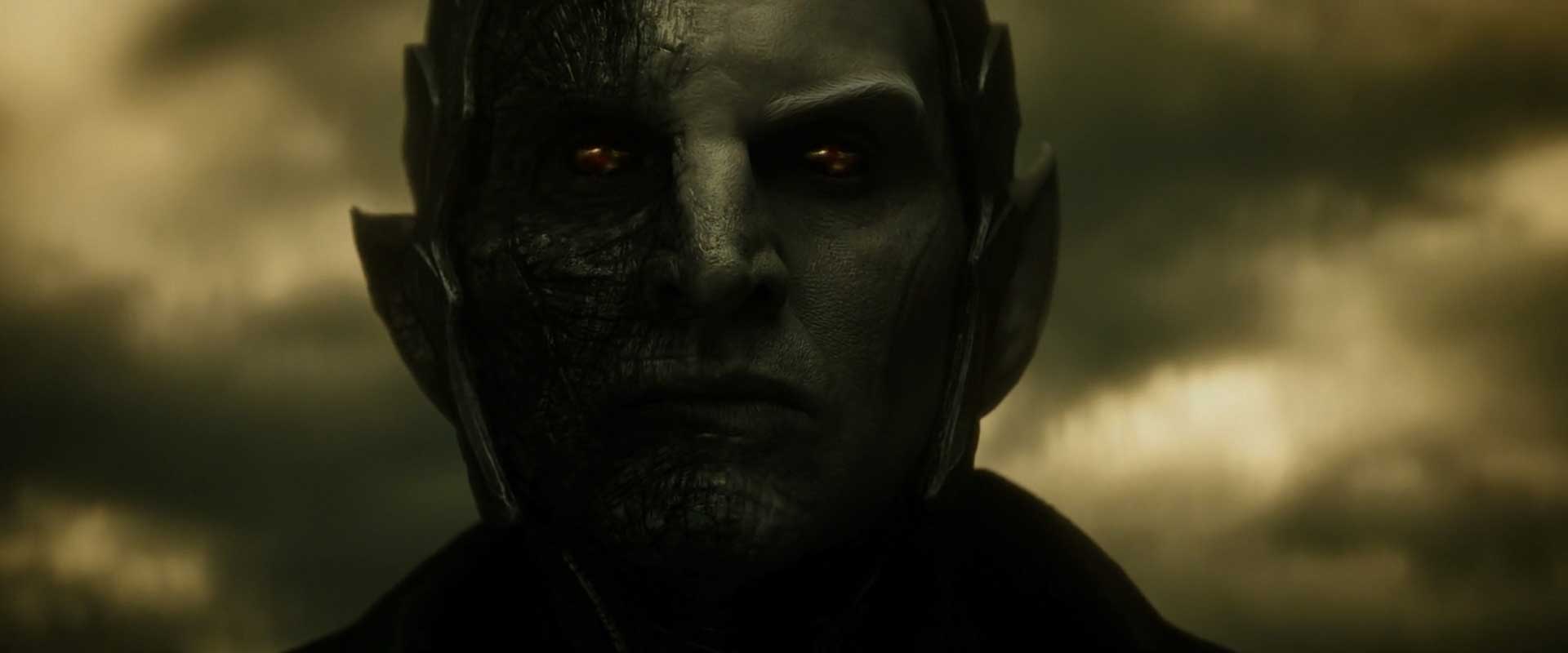One could argue that by the time Iron Man 3 was out, Marvel had an invisible yet omnipresent formula down to a T. No one could quite figure out or put their hands on what that was but pretty much everyone started agreeing that all Marvel Cinematic Universe movies felt similar in some sense. Whether it’s the technicalities like color grading, orchestral score, visual effects quality, editing and run time or even the cinematography or some of the more narrative driven aspects like pacing, action sequences, larger MCU references, all flanked by similar opening and closing titles followed by mid- and post-credit scenes, MCU movies were beginning to feel the same regardless of how different they were. Thor: The Dark World holds the ignonimous honor of this template taken so far that it epitomizes the general Marvel movie to a fault.
That of course, is no good honor to hold. For The Dark World feels painfully generic, devoid of any mark that makes it memorable or uniquely identifiable. Sure, you’re entertained at well-distributed moments throughout, largely the result of adhering to some of the aforementioned rules. And The Dark World plays its cards well, throwing in action sequences and generous humor when things get dull or a solid Avengers cameo when they get too repetitive. And all this adds some levity to the proceedings, but fails to elevate the movie beyond its stamp of genericness. It all strikes as a painful blow, given that it’s directed by Alan Taylor, the man behind unarguably some of the finest episodes of Game of Thrones, a highly difficult TV Show to adapt (inserting shameless reference to ask viewers to check out my For The Throne series).
A lot of the problems around The Dark World could be narrowed down to behind-the-scenes tampering, of which there exists not solid proof but only disputable claims. Director Alan Taylor himself has talked about his wretching Marvel experience, openly alleging that the movie he shot turned into something entirely different during post-production. The deleted scenes do lend some credence to Taylor’s claim, for they’re truly scenes that had no business being left out on the cutting room floor. Then again, Marvel has counteracted by naming movies like The Avengers or Iron Man or Thor as movies where the director’s stamp is visible. I suppose it boils down to the presence of the notoriously infamous Marvel Creative Committee back in the day, spearheaded not by Kevin Feige but by Ike Perlmutter.

Of course behind-the-scenes troubles are no excuse for labeling a movie as bad. So if I’m slamming Thor: The Dark World, I ought to be able to justify it through what I saw on screen. And what I saw was plenty of imbalanced humor, in one instance close on the heels of a major character’s death, a dumbed down Jane Foster (Natalie Portman, simply going through the motions) and lots of action sequences strung together without devoting adequate tie to some useful story details such as Malekith The Dark Elf’s motivation. In fact, Malekith holds the victory on being the dullest, blandest MCU villain to grace the movies; I’m willing to wager Agents of S.H.I.E.L.D. had better villains than him. His chief objective is to get hold of the Aether to plunge the universe into eternal darkness. For? Only God knows.
It’s the imbalance of tone that hits you really hard when watching the movie. Some of the humor is actually great and brings out a hidden side to Thor that would not be fully tapped until his third outing. But you see seeds of that here, when he’s frantically banging buttons trying to get his ship to steer. It comes at an inopportune moment though when we haven’t had enough time to sink in what went before that. Likewise, Thor’s pairing with Loki gives Tom Hiddleston’s antagonist some new material to work with rather than just play the antagonist. That it comes after what Loki does in The Avengers is somewhat indigestible and is portrayed as a case of desperate times calling for desperate measures. Also for some reason, The Dark World seems a lot more intent devoting time to Darcy and her intern’s meaningless subplot to score in humor as opposed to focusing on other vital areas like the conflict at Asgard, the history of the “relics” and Malekith and Kursed’s backstories which could’ve fleshed out the movie further, a decision that I guess could be attributed to some forced reshoots.
This again doesn’t mean that The Dark World does not have any redeeming qualities. Brian Tyler’s score really shines here, and produces some really touching, poignant themes. Again, the death of a central character gets one of the more memorable movie pieces. Thor’s theme is also updated and ebbs well with the character we know. The visuals are largely competent, although there are some good shots of Svarthalfeim (the realm inhabited by what’s left of the Dark Elves) and an opening battle comprised almost entirely of CGI except three people. The final fight is entertaining as well, with Thor and Malekith slipping in and out through portals, and comes as a respite in light of the average fight choreography seen during the rest of the movie (the opening sequence at Vanaheim especially).

Thor: The Dark World does hold a lot of firsts for an MCU movie. Unfortunately, it is important only in those technicalities and nothing else. Between Odin’s small speech about “ancient relics” and the mid-credits scene, it’s literally the first movie to introduce the concept of an Infinity Stone to the MCU, going so far as to actually name them. Speaking of credits, it’s the first non-Avengers movie to do a proper mid-credits scene (The Avengers was originally to have only one credits scene). It’s also the shortest MCU movie, clocking in at 1 hour, 54 minutes. And it moves the needle ahead as far as templatizing these Marvel movies go by composing special fanfare and compositing footage from the movies to compile the Marvel Studios logo, something that would continue to be used for the feature films ahead. To wrap up its mundane “achievements”, it’s also the first MCU movie to be fully distributed by Walt Disney Studios and free of the Paramount Pictures logo after Disney’s acquisition of Marvel and the fulfilment of their deal with Paramount.
With those seemingly trivial accomplishments, Thor: The Dark World stands as the least impressive movie in the Marvel Cinematic Universe. And yet, it’s a testament to just how well Marvel’s shared universe formula was working to see The Dark World almost double the gross of its predecessor by bringing in $644 million worldwide. It’s impact is further diminished and its legacy further deteriorated once we become aware of the movies that came ahead. And one doesn’t need to look further than a year for this; while 2013 would end up being a mixed year for the MCU, 2014 would be the year it would rebound with glorious results and wildly different, unique and enthralling movies.
In this Appocalypse weekly series titled The Road to Avengers: Endgame, we take a look at all the Marvel Cinematic Universe movies leading up to the release of Avengers: Endgame with a specific focus on the importance of the movies in the MCU pantheon. These pieces may be laden with spoilers so read carefully.





